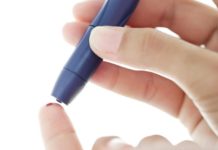
Maintaining Testosterone Balance Before and After Menopause

Menopause is a time in a woman’s life when the ovaries stop making estrogen and progesterone. In response to this, the pituitary gland increases follicle-stimulating hormone (FSH) production. FSH is a hormone, which regulates estrogen and progesterone through the woman’s reproductive years. When all the eggs gets depleted, estrogen and progesterone cannot be made further. However, the pituitary, which is programmed to respond to low estrogen makes high amounts of FSH.
Dr. Marina Johnson says that increased FSH is a biomarker of menopause. The production of testosterone does not occur from the eggs, but from different ovarian cells that continue to work in the post-menopausal ovary. This rise in FSH results in increased production of testosterone.
Woman, who is in her post-menopausal years, often gets acne and facial hair even if the levels of testosterone are normal but the estrogen is deficient. This is the reason why adult women get facial hair and their voice deepens. It should be taken care to restore the levels of progesterone and estradiol before testosterone is given. This will lower FSH, which will further prevent the production of testosterone.
FSH levels can never go back to what is seen in pre-menopausal women. Young women, who go through surgical menopause may find testosterone replacement essential. They experience decrease in libido and may also have urinary incontinence. There are many studies that indicate that testosterone along with estrogen and progesterone protects the breast and reduces the risk of breast cancer.
Some studies also suggest that women, who have naturally high levels of testosterone, have greater risk of breast cancer. In a study conducted over a period of 9 years on 949 menopausal women, who were not on HRT. It was reported that the predominance of testosterone was associated with increase in metabolic syndrome.
Metabolic syndrome is the term for a combination of risk factors that increase the chances of having heart disease and diabetes. Generally, people have high blood pressure, accumulation of fat around the waist, low levels of good cholesterol. Another study examined 344 women experiencing menopause in the age range of 65-98. It reported that women, who had high levels of testosterone, had three times more likelihood of having heart disease and metabolic syndrome as compared to those, who have low levels of testosterone.
Dr. Johnson stresses the fact that these studies reinforce the idea of respecting the physiology of the body. It is best to prescribe testosterone when the woman has adequate estrogen. Adrenal glands and menopausal ovaries can make testosterone. Before testosterone is prescribed, the levels must be assessed by lab blood assay to measure the levels of testosterone. Too much of testosterone can lead to facial hair, loss of hair from scalp and acne. These symptoms can be avoided with regular monitoring of blood levels.










